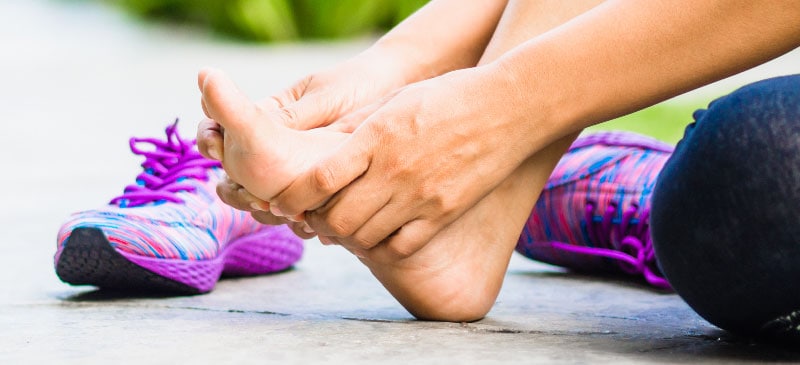This Dr. Axe content is medically reviewed or fact checked to ensure factually accurate information.
With strict editorial sourcing guidelines, we only link to academic research institutions, reputable media sites and, when research is available, medically peer-reviewed studies. Note that the numbers in parentheses (1, 2, etc.) are clickable links to these studies.
The information in our articles is NOT intended to replace a one-on-one relationship with a qualified health care professional and is not intended as medical advice.
This article is based on scientific evidence, written by experts and fact checked by our trained editorial staff. Note that the numbers in parentheses (1, 2, etc.) are clickable links to medically peer-reviewed studies.
Our team includes licensed nutritionists and dietitians, certified health education specialists, as well as certified strength and conditioning specialists, personal trainers and corrective exercise specialists. Our team aims to be not only thorough with its research, but also objective and unbiased.
The information in our articles is NOT intended to replace a one-on-one relationship with a qualified health care professional and is not intended as medical advice.
Natural Treatment for Plantar Fasciitis, Including 5 Key Stretches
February 14, 2023

Roughly 11 to 15 percent of the adult population suffers from the type of heel pain known as plantar fasciitis, also known as plantar heel pain (PHP) or fasciopathy. Plantar fasciitis is caused by inflammation of the thick fascia tissues of the heels.
It’s a common running injury and usually triggered due to overuse of the feet during exercise, or from working out with poor form. It can affect either one heel at a time (usually in the dominant foot), or both simultaneously.
Learn exactly what is plantar fasciitis, its symptoms, causes and various natural treatments.
What Is Plantar Fasciitis?
Plantar fasciitis is the most common cause of heel pain in adults. It accounts for an average of two million patient visits per year to family doctors, orthopedics and general surgeons.
Experts believe that the causes of plantar fasciitis are multi-factorial. Risk factors include overtraining, older age, excessive foot pronation, obesity or being overweight and poor form when working out.
It’s most likely to affect middle-aged people and those who spend lots of time on their feet or exercising. In fact, about 83 percent of patients with heel pains are active working adults between the ages of 25 and 65 years old.
Athletes (especially runners), people who have physically demanding jobs and soldiers are most susceptible to developing heel problems and pains.
The prevalence rates of plantar fasciitis among runners is between 4 to 22 percent, with higher rates occurring in those who don’t allow enough time between workouts for proper muscle recovery.
Studies show that about one-third of all people with plantar fasciitis report experiencing painful symptoms in both feet.
According to the American Academy of Orthopedic Surgeons, more than 90 percent of all patients with plantar fasciitis will improve within 10 months of starting simple treatment methods that can be done at home.
Symptoms
Plantar fasciitis symptoms usually develop gradually over several weeks or months, especially after beginning an exercise program or becoming active in a new way.
The most common symptoms of plantar fasciitis include:
- Pain in the heel, especially when waking up and taking the first few steps of the day
- Worsening bone and joint pain after exercising, lifting weights or carrying heavy objects
- Tenderness and sometimes swelling throughout the feet
- Trouble walking normally and completing everyday tasks without pain
- Reduced pain when stopping repetitive movements or exercising for a period of time
Causes
Most form of heel spurs or pain, including plantar fasciitis, are caused by an inflammatory process that results in changes in the tissues of the heels. Plantar fasciitis is characterized as a disorder of degenerative changes in the foot’s “fascia” tissue, which help support the arches of the feet, bear the weight of the body, and absorb shock and pressure. Plantar fascia are thick, elastic and connect the heel bones (called the metatarsal bones) to the toes, which creates the arch of the foot.
When someone develops plantar fasciitis, they experience tiny micro-tears in the heel fascia due to injury or overuse that lead to inflammation and swelling (fluid build-up called perifascial edema). In the process of the body trying to heal the micro-tears, the heel pad increases in thickness and loses flexibility, normal range of motion and the ability to absorb shock.
The affected heel becomes unable to “push-off” the ground normally or withstand the body’s weight. This means that every time someone tries to get up and move around they feel pain and compensate by either staying inactive or changing posture.
This often triggers a vicious cycle leading to more tissue damage. This abnormal repair process often leads to collagen degeneration, structural changes and ongoing swelling.
Risk factors for plantar fasciitis, heel pains and heel spurs include:
- Being an athlete or someone who exercises often; overuse of the tissue in the feet can lead to a higher susceptibility for injury.
- Having a job that requires a lot of standing and walking (being a waitress, maid/cleaner or landscaper for example).
- Exercising with poor form, on hard surfaces, and not properly warming up.
- Being a runner, especially someone who runs with worn0out shoes or improper form. Studies show that plantar fasciitis is a common running injury — along with shin splints, runner’s knee, IT band syndrome, stress fracture and Achilles tendinitis.
- Having biomechanical problems with alignment of the feet. This can include muscle dysfunctions and inflexibility that might be the result of injury, or also genetically inherited. Examples include: tight calve muscles, excessive pronation of the foot, or decreased ankle flexion due to having a tight Achilles tendon.
- Obesity or being overweight. People above a BMI of 30 are at the highest risk.
- Starting an exercise program or physically demanding job too quickly without giving the feet time to adjust.
- A history of other inflammatory diseases including diabetes, arthritis and tarsal tunnel syndrome.
- Lifestyle factors that promote inflammation and higher risk for injury, including eating a poor diet, smoking, having very high stress levels and getting poor sleep.
Natural Treatments
For the majority of people with plantar fasciitis, conservative treatments — as opposed to more aggressive treatments like surgery, shock wave therapy or steroid injections — can help decrease inflammation and pain.
1. Rest, Massage and Ice the Heel
The first order of business in treating plantar fasciitis involves taking time off from repetitive movements that trigger the condition and increase pain. You’ll likely need at least several weeks of rest to allow the affected tissue to heal properly, although the exact time period needed differs from person to person. While you’re giving your feet a rest, you can continue to perform low-impact sports that don’t cause pain, including swimming or bicycling.
Immediately after an injury or episode that causes swelling, icing can be helpful. Try elevating the affected foot and applying an ice pack for 15 to 20 minutes, two to four times daily.
Once swelling subsides a bit after about two to three days, massage the heel and apply heat to further reduce inflammation. Increasing blood and fluid flow will speed up the healing process and break up scar tissue or adhesions that can harden. Massage the painful heel with your hands in circular motions for 15 minutes or more daily.
Some studies have found that even self-administered massage along with icing can help reduce pain associated with plantar fasciitis. In this case, cross-friction massage strokes to the feet seem to be most effective for curbing pain.
You can also try warming up a small amount of coconut or olive oil and then adding essential oils like rosemary oil, thyme oil, rose oil or lavender oil to help decrease pain and swelling.
In addition, roller massage is a great option for plantar fascitis or any foot issues. Simply roll your foot over the roller massager for relief.
2. Practice Heel Exercises and Plantar Fasciitis Stretches
Studies show that in patients with plantar fasciitis, stretching exercises for the legs and affected heel are one of the most effective treatment options. Stretching the bottom of the foot, along with exercising and strengthening the legs (especially the calf and Achilles tendon), reduces tissue adhesion, improves form, helps improve range of motion and may decrease pain.
One study from the Baltalimanı Osteopathic Training and Research Hospital in Turkey found that 86 percent of patients with plantar fasciitis experienced improvements after performing specific heel stretches for five months. The study also found that symptoms improved after performing stretching exercises twice a day.
Stretches included 10 repetitions, holding for 20 seconds each time. The American Orthopedic Food and Ankle Society, along with the Mayo Clinic, recommend the following exercises and stretches to help treat plantar fasciitis:
- Towel stretches: Pull on both ends of a rolled towel that you place under the ball of your foot. Move your foot and the towel around to help massage the affected tissue. You can use a warmed towel for extra relief.
- Toe stretching: Cross your affected leg over your other leg and take hold of your affected foot. Pull your toes back towards your shin. Hold this stretch for 10 seconds and do 10 repetitions.
- Thumb massage: Try rubbing your thumb left to right over the arch of the affected foot. As healing progresses, the tissue will ideally become firm like a guitar string.
- Squat stretches: Lean forward and spread your feet apart with one foot in front of the other. Flex your knees and squat down, keeping your heels on the ground as long as possible. Hold for 10 seconds at a time. Repeat 20 times.
- Achilles tendon stretches: Place your affected leg behind your unaffected leg with the toes of your back foot pointed towards the heel of your other foot. Lean against a wall and bend your front knee while keeping your back leg straight. Keep your back heel firmly on the ground and stretch it for 10 seconds at a time, up to 10 times daily.
3. Wear Supportive Shoes and Footwear
Your shoes can really impact your walking or running form. Shoes also impact your ability to withstand force and pressure. If you experience heel pain frequently, it’s a good idea to consult an expert, such as a physical therapist or trained employee in a sporting goods store. They can measure your feet and help you find the best type of sneakers or shoes for your foot type. Your shoes can offer extra cushion and arch support which lower risk for injury while exercises or going about your day.
If you’re a runner, make sure to buy new shoes after about 500 miles of use to avoid wear-out and injury. Avoiding high heels, sandals and going barefoot on hard surfaces can all help control heel pains and symptoms.
Another option would be to consider to wearing specialized foot orthotics or splints. Your doctor or physical therapist might recommend wearing a splint that stretches your calf and the arch of your foot. These can even be worn during sleep without much effort at all (called a “night splint”). Night splints help keep the plantar fascia and Achilles tendon in a lengthened position which increases flexibility.
Heel cups are another useful support device, made of cushions that are custom-fitted to your arches in order distribute pressure to your feet more evenly.
4. Maintain a Healthy Weight
Reaching and sustaining a healthy body weight (meaning a BMI between about 19 to 25 for most people) can help minimize the amount of stress placed on your heels. The higher your body weight, and the weaker your lower leg muscles, the more pressure your heels experience.
Eating an anti-inflammatory diet, reducing stress, getting enough sleep and regularly exercising can all help with weight loss and maintenance. Some of the best foods for weight loss and controlling inflammation include: fresh fruits and vegetables (these are rich in magnesium and potassium), raw foods, green juices, wild-caught fish, probiotic foods, nuts and seeds, and healthy proteins like cage-free eggs and pasture-raised poultry. Just be sure to choose organic produce to avoid the dirty dozen.
5. Consider Visiting a Physical Therapist
If pain doesn’t subside after following the advice above on your own, visit a physical therapist. A therapist teach you how to perform heel exercises to stretch the plantar fascia in the most effective way. If you’re new to running or exercising, a therapist can also work with you to learn proper form.
Therapists can also help you learn how to strengthen your Achilles tendons, calves and lower leg muscles, along with your ankles and lower back, to stabilize your body weight over your heels better.
A physical therapist also may choose to employ the Graston technique, which is clinically proven to achieve faster and better patient outcomes in treating plantar fasciitis.
Plantar Fasciitis vs. Heel Spurs
Heel spurs are commonly mistaken for plantar fasciitis because they share many of the same symptoms. A heel spur is simply the presence of an extra protrusion on the bony surface of the heel, while plantar fasciitis is the inflammation of the plantar fascia.
Both conditions change how connective tissue form and operate near the arch on the bottom of the feet. It’s also possible to have both at the same time, although this isn’t always the case, since many individuals with plantar fasciitis do not have a spur despite feeling pain.
With plantar fasciitis, strain on the plantar fascia leads to irritation, swelling and then a weakness of the arch. Heel spurs can also cause inflammation and pain. Heel spurs form in response to repetitive damage and strain on the heels. Cells that specialize in forming bone migrate to the inflamed site and start depositing calcium. This deposit then forms a protrusion of soft-tissue buildup over several months known as the heel spur.
Like plantar fasciitis, heel spurs are commonly caused by walking or running with poor form, over-exercising on hard surfaces, wearing poorly-fitted or badly-worn shoes and being overweight. Both can cause throbbing, redness and swelling in the feet, plus they commonly force people to become less active. Similar treatments help with both conditions, including massaging the area, resting and icing, stretching, wearing supportive shoes and eating a healthy diet.
Complications and Precautions
Worried that your heel pain due to plantar fasciitis might cause long-term damage? Fortunately, most people are able to heal and overcome plantar fasciitis naturally, leading to recovery and low risk for permanent damage. About 90 percent of people with plantar fasciitis improve significantly after two months of initial treatment, especially if they include stretches and exercises.
Make sure to take time off from exercise if pain persists in order to avoid further injury. Keep track of your symptoms and prevent future problems by replacing sneakers and shoes regularly, avoiding running on uneven and hard surfaces, and staying at a healthy weight.
If your symptoms last for more than six months, definitely visit your health care provider. He or she may suggest specialized splints, medications and/or steroids to reduce inflammation. Surgery for plantar fasciitis is very rarely needed and is only a last-resort option, so it’s a good idea to get a second opinion if this is the treatment approach recommended.
Final Thoughts
- Plantar fasciitis is one of the most common foot conditions, impacting millions of people each year and accounting for more doctors visits than any other foot problem.
- It is caused by inflammation of plantar fascia tissue in the heel, as a result of factors including over-exercising, running with poor form and wearing shoes that aren’t supportive enough.
- Although it can be very painful and annoying, plantar fasciitis is mostly preventable and highly treatable with rest, icing, massage and targeted stretches and exercises. Symptoms usually go away with several months and only very rarely are interventions including medications and surgery needed.





